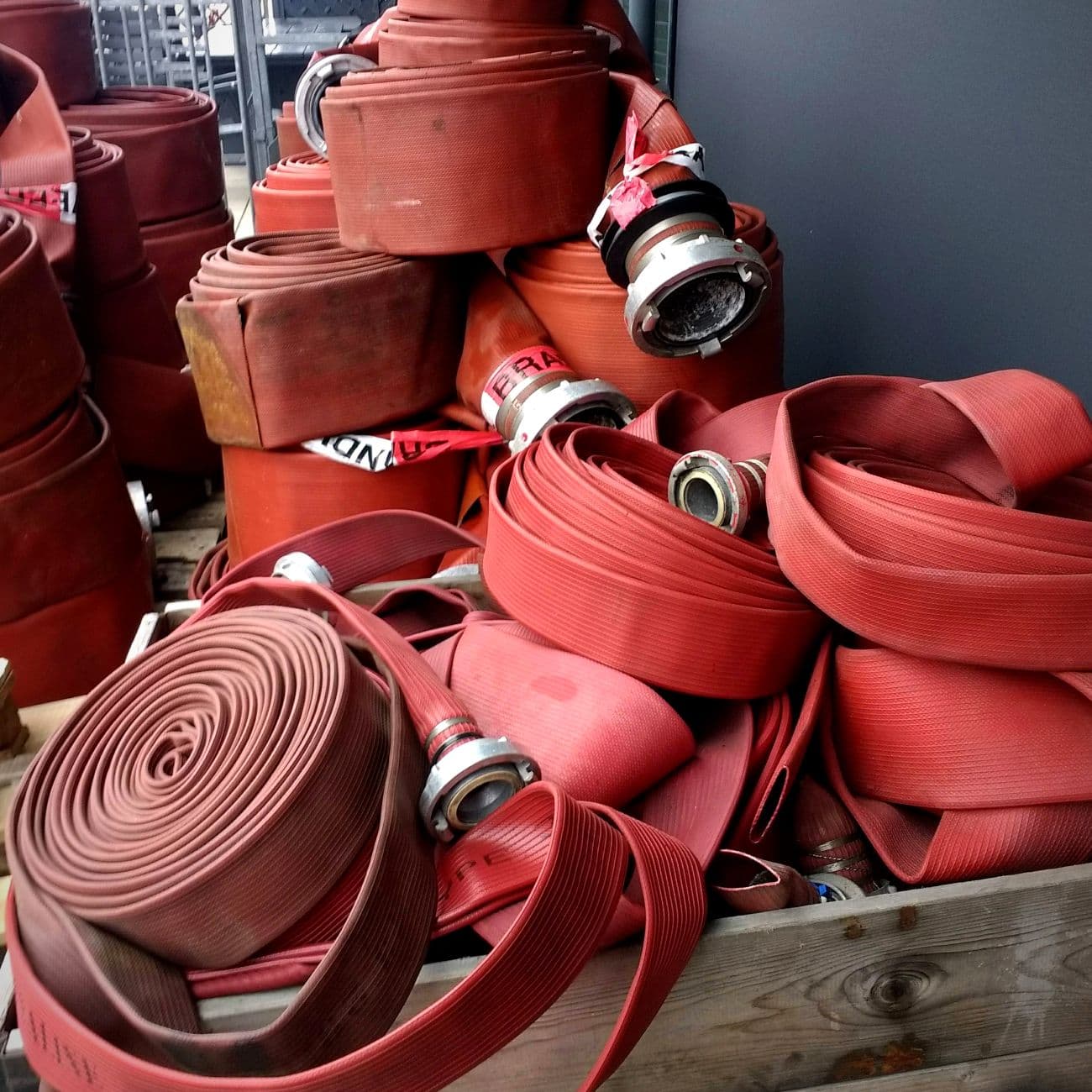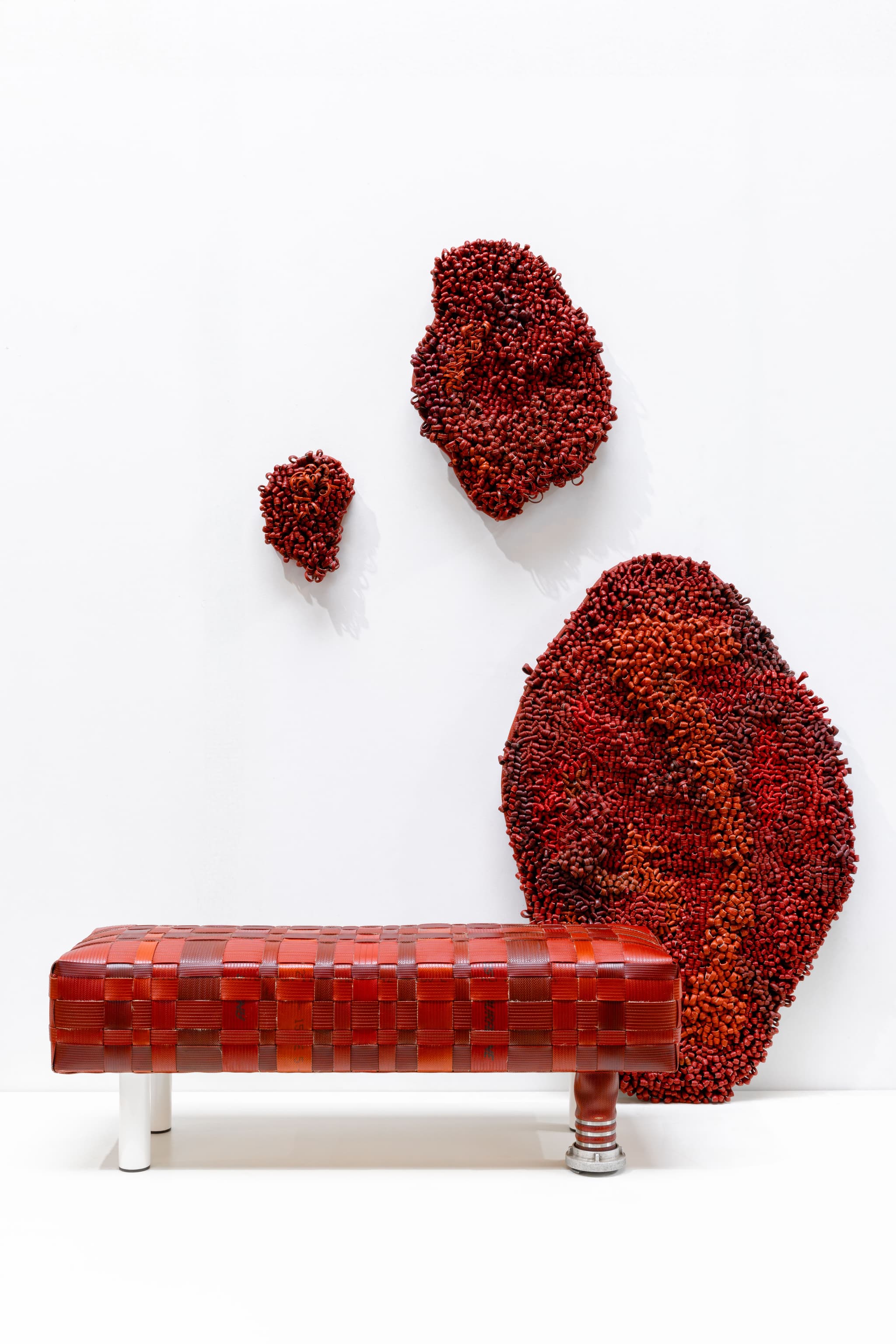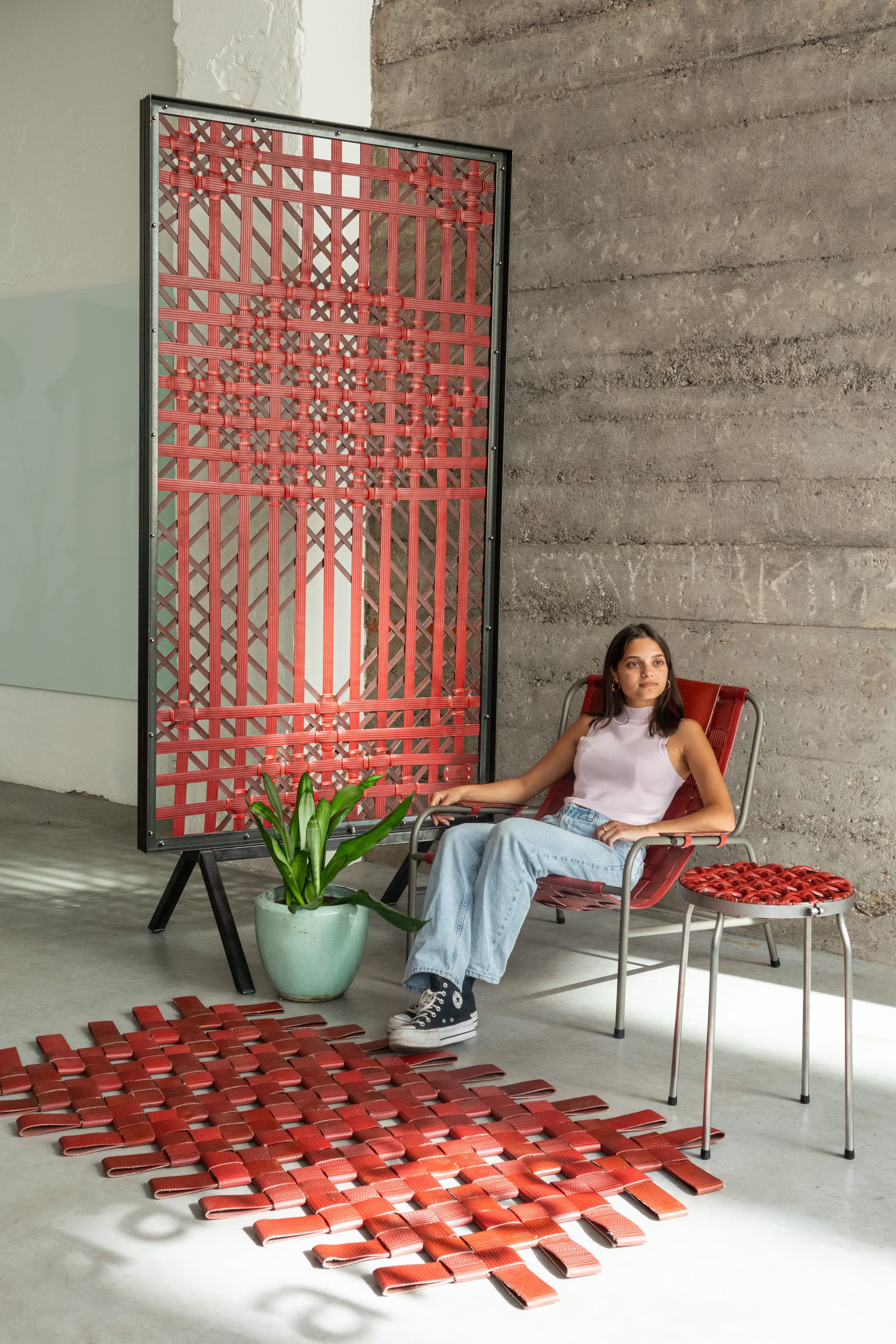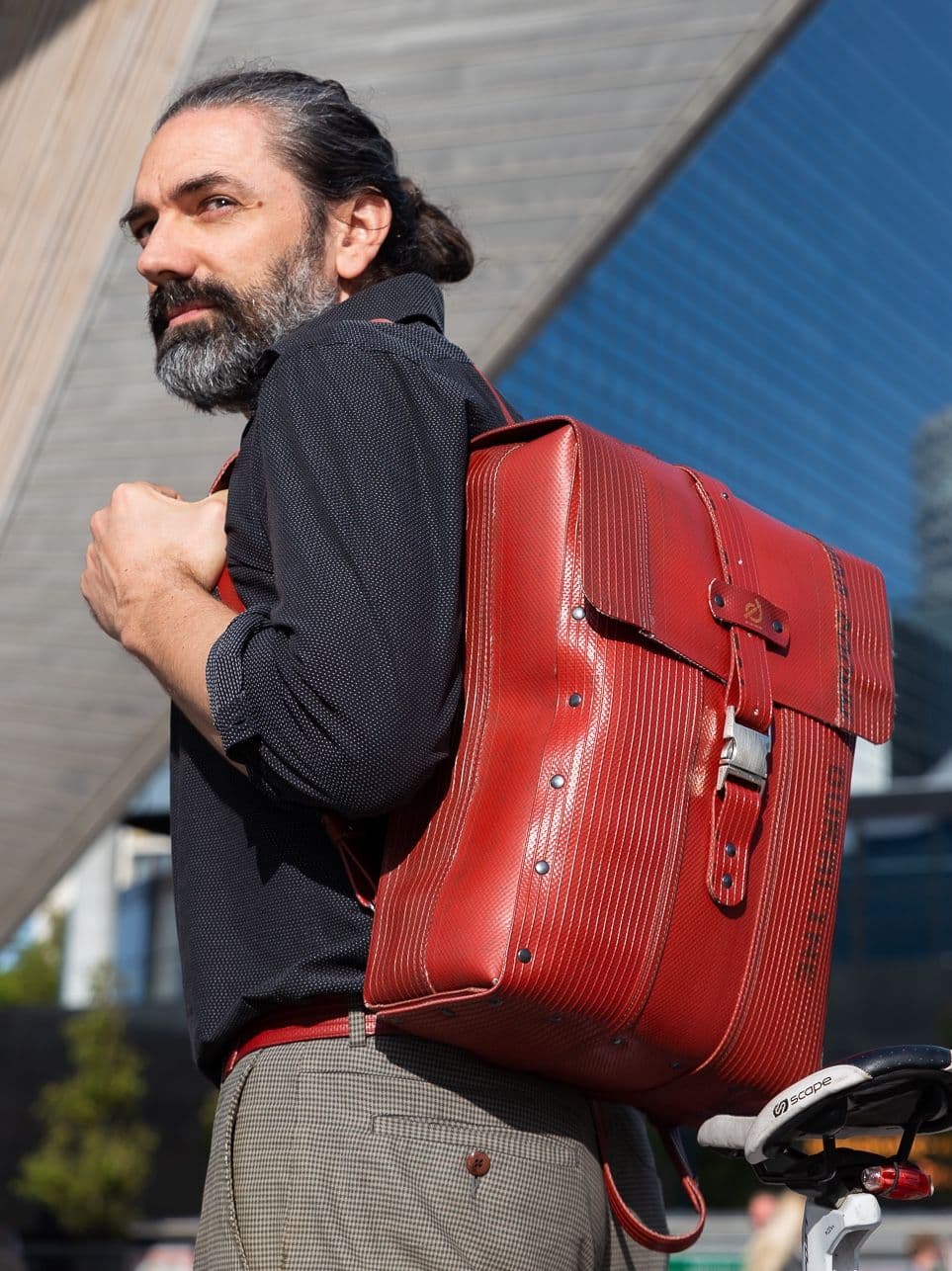1. Eversom products are made from upcycled fire hoses, a material that’s far from conventional. Could you walk us through the process of transforming a discarded fire hose into a high-end fashion accessory? How do you ensure that this material maintains its durability and aesthetic appeal?
When I began designing, I wanted to explore how far reused materials could be elevated to create truly luxurious designs. My goal was to prove that reusing materials doesn’t have to mean compromising on quality. In fact, by carefully selecting and working with these materials, you can create high-end products without sacrificing luxury. The process begins with cutting and thoroughly washing the fire hoses. Once cleaned, their appearance is surprisingly similar to leather: they have a deep, rich color, a soft gloss, and a distinct texture that’s even more captivating than traditional leather. This material brings a sense of character and history, and with it, a unique story that you can feel proud to support. Not only do we maintain the material’s durability, but the patina it develops over time only enhances its appeal. The fire hoses are sturdy, designed to withstand extreme heat and pressure, making them an ideal base for creating robust yet stylish products.

2. The use of fire hoses, which have already withstood the heat of countless fires, is a remarkable way to repurpose materials. How do you evaluate the quality of these hoses when selecting them for use in your designs, and how do you ensure consistency in the final product?
Much like leather, fire hoses come in various brands, widths, and conditions. Each hose has its own qualities, such as color, suppleness, and overall durability. In the workshop, we meticulously sort the hoses according to the requirements of each design. We keep a sufficient supply of material to ensure we have consistent stock for every type of hose. While each product is unique due to the variations in the hoses, the overall quality remains consistent. The beauty of using fire hoses is that even though each piece tells its own story, it’s still possible to maintain a level of uniformity that’s necessary for high-end fashion. Every piece undergoes rigorous selection to ensure the final product is both durable and aesthetically appealing.

3. In your design process, you allow the material to dictate the form. Could you elaborate on how the irregularities and markings of the fire hoses, such as their brand names and scars, influence the design of your bags and other products?
The unique characteristics of fire hoses are integral to the designs. These hoses often feature scars, brand markings, and color variations that would typically be considered imperfections. However, in the case of Eversom’s designs, these markings add authenticity and individuality to each piece. The hoses' limited width requires that I sew several pieces together to form larger items like bags. This provides an opportunity to alternate the interior and exterior of the hoses, incorporating different shades and textures in the design. The result is a one-of-a-kind pattern that makes each product distinct. Additionally, I spent a significant amount of time refining a weaving technique that eliminates traditional seams, which is essential to preserving the aesthetic and functionality of the design. By doing so, I ensure that the inside of the bags is as beautifully crafted as the outside. No lining is used, but inner pockets are incorporated to maintain practicality. The distinct patterns, scars, and markings from the hoses enhance the design, turning what would be imperfections into elements that tell a deeper story.

4. The fire hoses’ texture and markings are an essential part of their character. How do you ensure that these elements are preserved during the crafting process, and how do they enhance the overall luxury appeal of the products?
We take great care to preserve the texture and markings of the fire hoses during the crafting process. Every bag and product is carefully designed so that the marks and unique textures of the hose remain visible and part of the finished piece. This careful deployment of elements, like brand codes and scars, allows each item to tell a story. In some cases, we choose to avoid using certain codes to allow the natural color and texture of the material to shine through. The fire hoses’ rugged appearance adds to the product's luxury appeal. It’s not just about aesthetics—each mark or scar carries a narrative that enhances the product’s authenticity. By highlighting these features, we elevate the materials and make them part of the design’s charm. The result is a product that not only looks beautiful but also carries a sense of history and durability.

5. The materials used in your designs, such as the fire hoses and Shorai, are highly durable. How do you ensure that the products retain their quality and performance over time, particularly in everyday use?
One of the most fascinating aspects of working with fire hoses is their ability to age beautifully. Since the hoses are often over 20 years old when they are upcycled, they have already proven their durability. Fire hoses don’t require maintenance or greasing like leather, and they are easy to clean with just water. Over time, the material only becomes shinier, which adds to its visual appeal. We also design each product to be easy to repair, ensuring that any damage that may occur over time can be easily addressed. By designing with longevity in mind, our products not only withstand daily use but improve with age, much like fine leather.

6. How has the journey shaped your views on the future of sustainable design in fashion?
This journey has deepened my belief in the vast potential of used materials and how they can inspire new ideas for design. The idea of creating circular products, where materials are repurposed and given new life, is not only a sustainable choice but also an exciting one. By embracing the history and character of materials like fire hoses, we open ourselves up to new creative possibilities that we wouldn’t consider if we were only working with new, raw materials. The future of fashion lies in rethinking how we use resources. Through sustainability, we’re creating not just products, but stories that connect us to a richer history and a brighter future. It’s an exciting time to be part of the movement toward a more responsible, yet innovative, approach to design.








